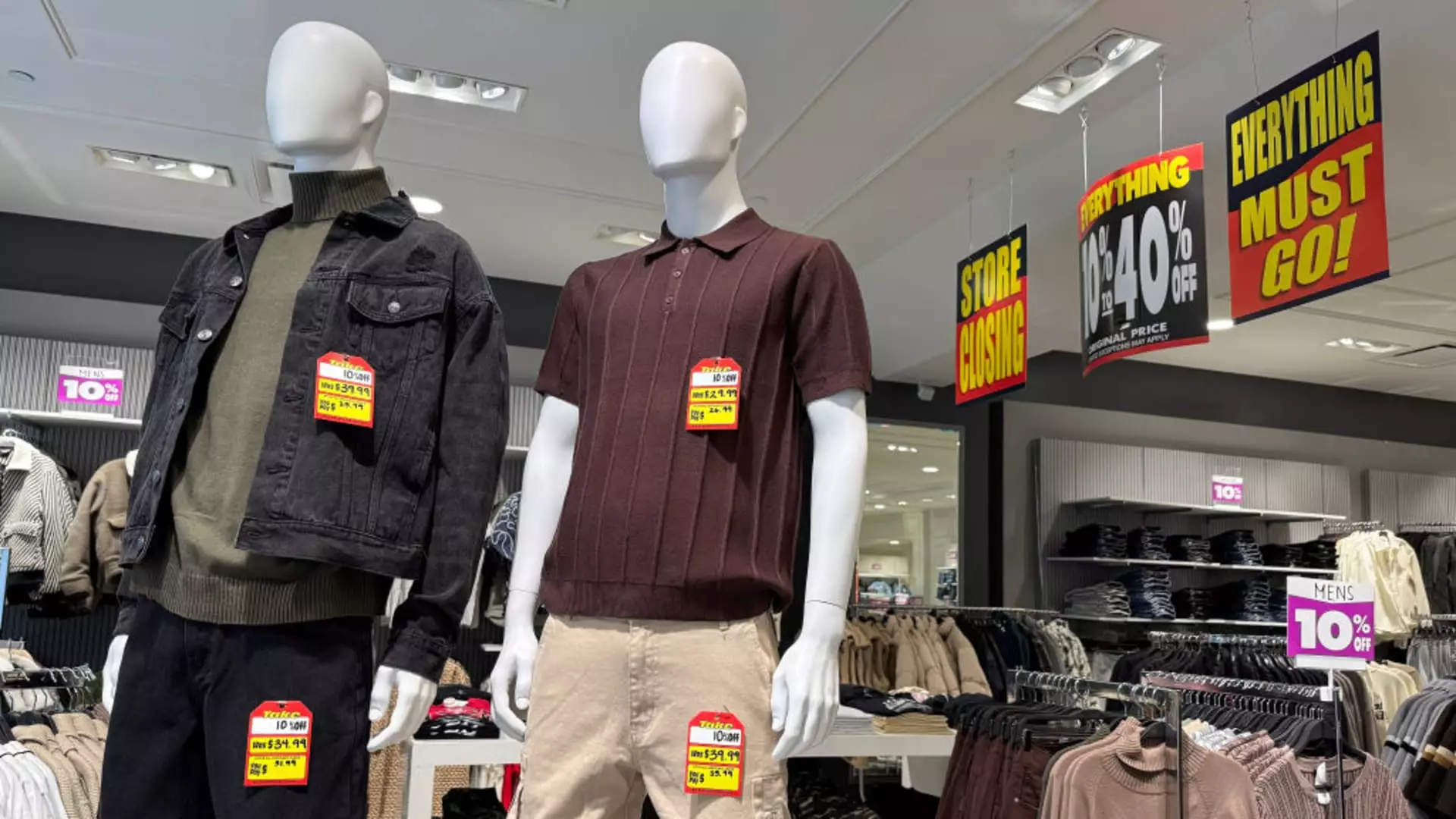The recent announcement of Forever 21’s second bankruptcy filing within six years serves as a stark reminder of the rapidly changing landscape of retail. Despite having once held a prominent position in the fast-fashion market, this iconic brand has faced insurmountable challenges, culminating in a decision to cease operations in the U.S. and begin liquidation sales at more than 350 locations. This downfall not only signals a troubling trajectory for the company but also raises critical questions about the sustainability of the fast-fashion industry itself.
In a world where speed and cheapness dominate consumer choice, the failure of Forever 21 illuminates the havoc wreaked upon traditional retailers by burgeoning e-commerce competitors like Shein and Temu. The company has documented its struggles, explicitly attributing its collapse to these upstarts’ aggressive pricing strategies, facilitated by a little-known loophole in U.S. trade law that allows goods valued under $800 to sidestep import duties. This loophole, starkly highlighted in court filings, has given foreign competitors an unfair advantage, enabling them to offer products at prices that American retailers simply cannot match.
The Cost of Inequality in Pricing
Forever 21’s predicament goes beyond mere mismanagement or shifts in consumer preferences. Instead, it exposes a larger systemic issue within the U.S. retail landscape: the disparity in how domestic and foreign businesses are taxed. While American companies remain burdened with tariffs and duties that escalate the cost of their products, foreign competitors can flood the market at drastically reduced prices. As Forever 21’s co-chief restructuring officer, Stephen Coulombe, poignantly expressed, this scenario has rendered a level playing field unattainable for U.S. retailers.
Interestingly, corporate giants are typically adamant defenders of free-market principles, yet when the ramifications of those principles threaten their operations, the narrative shifts. The United States government has received widespread calls from domestic enterprises to close this de minimis loophole, yet little has been done. This breeds a climate of leniency for foreign e-commerce companies while placing the onus on traditional retailers to innovate, adapt, and, ultimately, compete with an incessantly evolving marketplace.
The Fatal Modernization Effort
In 2023, the Sparc Group—the owner of Forever 21—attempted to counter its rival’s encroachment by forming a partnership with Shein. This move, however, proved to be shallow and ineffectual for reversing the company’s downward spiral. Such a step reveals the vulnerability not only of Forever 21 but also of American retail at large. This dependency on an adversary for survival underscores the fact that even traditional retail strategies are irreversibly influenced by their competitors’ overwhelming market presence.
At a time when adaptation should be characterized by innovation and a distinct brand identity, Forever 21’s efforts came off as desperate rather than strategic. This flawed maneuver reflects a broader stagnation in vision where companies, despite a history of success, fail to re-evaluate their core values and position in an increasingly competitive market. The historical acclaim for Forever 21 as a pioneer in fast fashion is rapidly overshadowed by its current narrative of failure and liquidation.
A Bleak Financial Forecast
The financial outlook for Forever 21 is just as precarious as its operational stance. The company reported staggering losses exceeding $400 million over the past three years, with projections indicating a continuation of this trend. Notably, it lost $150 million in fiscal 2024 alone and anticipates further losses totaling $180 million through 2025. The company’s debts are astronomical, amounting to $1.58 billion across various loans and obligations to international clothing manufacturers predominantly from China and Korea.
This dire financial landscape highlights the underlying risks that American companies face in a global economy where foreign rivals are consistently propped up by favorable governmental policies. The leader of Authentic Brands Group himself acknowledged that acquiring Forever 21 was a misstep, reflecting the tumultuous state of brands that once enjoyed strong consumer loyalty.
The Future of Forever 21
Despite the unraveling of its U.S. operations, Forever 21 might not totally fade into obscurity. Its international branches and online presence could continue to operate, potentially allowing for a rebirth of sorts under new management. Yet the question remains whether this legacy brand can indeed reposition itself to resonate with modern consumers who prioritize sustainability over fast fashion.
As market trends shift towards conscious consumption, Forever 21’s struggle exemplifies the urgent need for evolution within the fashion industry. The spotlight now shines on Authentic Brands Group, suggesting an opportunity to modernize not just supply chains but also the fundamental ethos of fashion retail. In a landscape rife with competition, it takes more than catchy deals to win back consumer loyalty—lasting, impactful changes are necessary to forge a path forward. Forever 21 must strategically leverage its intellectual property and brand identity if it hopes to embrace a future that is both profitable and aligned with evolving consumer values.


Leave a Reply